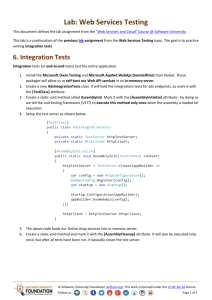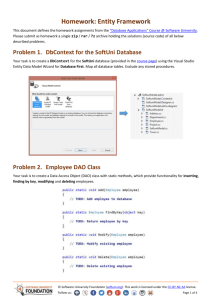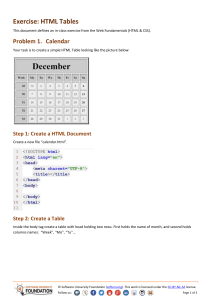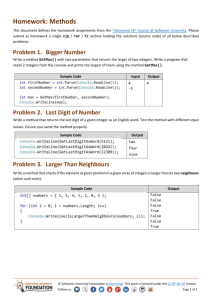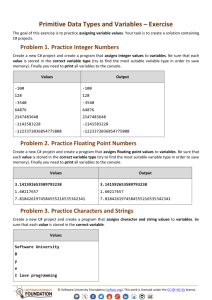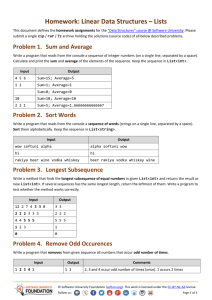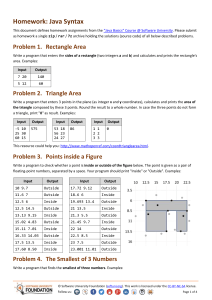Inheritance and Abstraction, OOP
advertisement
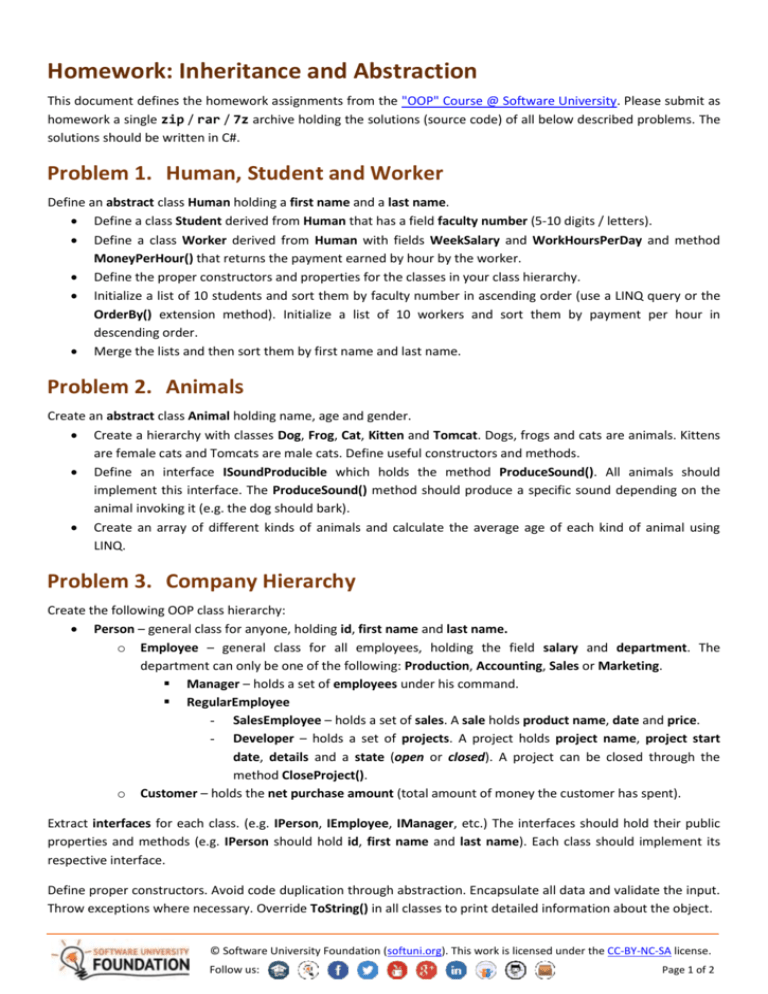
Homework: Inheritance and Abstraction This document defines the homework assignments from the "OOP" Course @ Software University. Please submit as homework a single zip / rar / 7z archive holding the solutions (source code) of all below described problems. The solutions should be written in C#. Problem 1. Human, Student and Worker Define an abstract class Human holding a first name and a last name. Define a class Student derived from Human that has a field faculty number (5-10 digits / letters). Define a class Worker derived from Human with fields WeekSalary and WorkHoursPerDay and method MoneyPerHour() that returns the payment earned by hour by the worker. Define the proper constructors and properties for the classes in your class hierarchy. Initialize a list of 10 students and sort them by faculty number in ascending order (use a LINQ query or the OrderBy() extension method). Initialize a list of 10 workers and sort them by payment per hour in descending order. Merge the lists and then sort them by first name and last name. Problem 2. Animals Create an abstract class Animal holding name, age and gender. Create a hierarchy with classes Dog, Frog, Cat, Kitten and Tomcat. Dogs, frogs and cats are animals. Kittens are female cats and Tomcats are male cats. Define useful constructors and methods. Define an interface ISoundProducible which holds the method ProduceSound(). All animals should implement this interface. The ProduceSound() method should produce a specific sound depending on the animal invoking it (e.g. the dog should bark). Create an array of different kinds of animals and calculate the average age of each kind of animal using LINQ. Problem 3. Company Hierarchy Create the following OOP class hierarchy: Person – general class for anyone, holding id, first name and last name. o Employee – general class for all employees, holding the field salary and department. The department can only be one of the following: Production, Accounting, Sales or Marketing. Manager – holds a set of employees under his command. RegularEmployee - SalesEmployee – holds a set of sales. A sale holds product name, date and price. - Developer – holds a set of projects. A project holds project name, project start date, details and a state (open or closed). A project can be closed through the method CloseProject(). o Customer – holds the net purchase amount (total amount of money the customer has spent). Extract interfaces for each class. (e.g. IPerson, IEmployee, IManager, etc.) The interfaces should hold their public properties and methods (e.g. IPerson should hold id, first name and last name). Each class should implement its respective interface. Define proper constructors. Avoid code duplication through abstraction. Encapsulate all data and validate the input. Throw exceptions where necessary. Override ToString() in all classes to print detailed information about the object. © Software University Foundation (softuni.org). This work is licensed under the CC-BY-NC-SA license. Follow us: Page 1 of 2 Create several employees of type Manager, SalesEmployee and Developer and add them in a single collection. Finally, print them in a for-each loop. © Software University Foundation (softuni.org). This work is licensed under the CC-BY-NC-SA license. Follow us: Page 2 of 2
